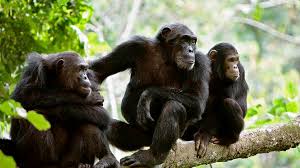- Arusha
- info@naturebaysafari.com
- +255 621 837 693
Katavi National Park
Overview
Katavi National Park is one of Tanzania’s largest and most remote national parks, located in the western part of the country. It covers an area of approximately 4,471 square kilometers (1,725 square miles) in the Katavi and Rukwa regions. The park is situated about 600 kilometers (373 miles) from the nearest major city, Mbeya, and is bordered by the Mahale Mountains to the northwest and the Rukwa Valley to the south. Katavi’s isolation and limited access contribute to its wild and untouched nature, making it a haven for wildlife and an ideal destination for those seeking a more off-the-beaten-path safari experience.
Landscape and Terrain
The park is characterized by a variety of landscapes, including grasslands, savannas, forests, wetlands, and seasonal lakes. The topography is dominated by the Katavi River, which flows through the park, creating fertile floodplains and marshes that are crucial to the ecosystem. During the rainy season (from November to April), the park becomes lush and vibrant, while the dry season (from May to October) sees the land dry up, causing some of the lakes to shrink and concentrate wildlife around the remaining water sources.
Wildlife and Biodiversity
Katavi National Park is renowned for its rich biodiversity and high concentration of wildlife, which includes some of the largest populations of wild animals in Tanzania. The park is home to a wide variety of species, including the Big Five (lions, leopards, elephants, buffalo, and rhinoceros), though rhinos are rare in the area.
Some of the notable animals found in Katavi include:
- Elephants: Katavi has a large population of elephants, and during the dry season, herds gather at the park's waterholes.
- Buffalo: The park is known for its large herds of buffalo, often numbering in the hundreds.
- Lions: Katavi is home to a healthy population of lions, and these predators are often seen hunting in the park's vast plains.
- Hippos: The park’s rivers and lakes support large populations of hippos, and visitors can often spot them lounging in the water.
- Crocodiles: The rivers also host large Nile crocodiles, which can be seen sunbathing on the banks.
- Giraffes, Zebras, and Antelopes: Various species of antelope, including impalas, hartebeests, and elands, are common. Giraffes and zebras are also found in the park.
- Primates: Although not as numerous, primates such as baboons and monkeys are present in the forested areas.
- Birdlife: The park is a birdwatcher’s paradise with over 400 species of birds, including the African fish eagle, pelicans, and herons.
Flora
The flora of Katavi is diverse, with a mix of forests, swamps, and savannah grasslands. Acacia trees and baobabs are common in the savannahs, while the floodplains and wetlands feature papyrus and reeds. During the rainy season, the park's grasses and vegetation are lush, providing ample food for the herbivores and supporting the entire ecosystem.
Activities and Attractions
Katavi National Park offers a range of safari activities for nature enthusiasts:
- Game Drives: The park is primarily accessed by 4x4 vehicles, and game drives offer visitors the chance to see a wide array of wildlife in their natural habitat. The park is known for its large concentrations of animals, especially during the dry season.
- Walking Safaris: For those seeking a more intimate experience with nature, walking safaris can be arranged with experienced guides. This allows visitors to get closer to the landscape and learn about the ecosystem in detail.
- Boat Safaris: Visitors can take boat rides along the Katavi River, providing opportunities to see hippos, crocodiles, and a variety of bird species.
- Birdwatching: With its diverse range of habitats, Katavi is an excellent location for birdwatching, attracting both local and migratory bird species.
Accessibility
Katavi is located far from Tanzania’s major tourist hubs, and it is one of the more challenging national parks to access. The nearest airport is in Mpanda, about a two-hour drive from the park. Visitors can also fly into Katavi via charter flights from Dar es Salaam or Arusha. For those traveling overland, the roads leading to the park can be rough, especially during the rainy season.
Conservation and Challenges
While Katavi National Park is a haven for wildlife, it faces several challenges related to conservation. The park's remote location makes it difficult to monitor and protect from poaching, and the expansion of human settlements around the park’s borders poses a threat to its ecosystems. However, efforts are underway to improve conservation management, including anti-poaching programs and community engagement to promote sustainable tourism practices.
Best Time to Visit
The best time to visit Katavi is during the dry season (from June to October), when wildlife is concentrated around the remaining waterholes and the vegetation is sparse, making it easier to spot animals. The rainy season (from November to April) is less favorable for safaris due to the challenging access and dense vegetation, but it offers a lush and vibrant landscape for those who prefer a quieter, more serene experience.
Conclusion
Katavi National Park is a truly wild and less-visited gem in Tanzania, offering visitors a chance to experience nature in its most raw and untouched form. Its diverse wildlife, stunning landscapes, and remote location make it a top destination for adventurous travelers and nature enthusiasts seeking an authentic safari experience away from the crowds.







